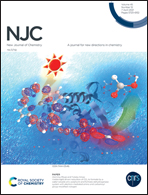Facile pyrolysis approach of folic acid-derived high graphite N-doped porous carbon materials for the oxygen reduction reaction†
Abstract
The development of active and stable carbon nanomaterials as electrocatalysts for the oxygen reduction reaction (ORR) remains a significant challenge. Herein, we report a one-step pyrolysis process to design hierarchical micro/mesoporous N-doped carbon (m-NC) materials using low-cost folic acid precursors. The optimal m-NC material carbonized at 750 °C (m-NC-750) displays a splendid ORR electrocatalytic activity and perfect stability in an alkaline medium (0.1 mol L−1 KOH). Notably, the current density of m-NC-750 can reach 4.35 mA cm−2 at 0.85 V, which surpasses that of commercial Pt/C (20 wt%). The higher electrocatalytic activity and activation of oxygen is due to the porous structures facilitating ion diffusion and the graphitic N dopant providing more active sites. In addition, the graphite N dopant of the m-NC material possesses the lowest energy barrier of reactions based on density functional theory (DFT) calculations, which effectively boosts the ORR of the as-prepared materials. This simple and economical method provides a facile way of designing high-performance carbon electrocatalysts for the ORR.



 Please wait while we load your content...
Please wait while we load your content...